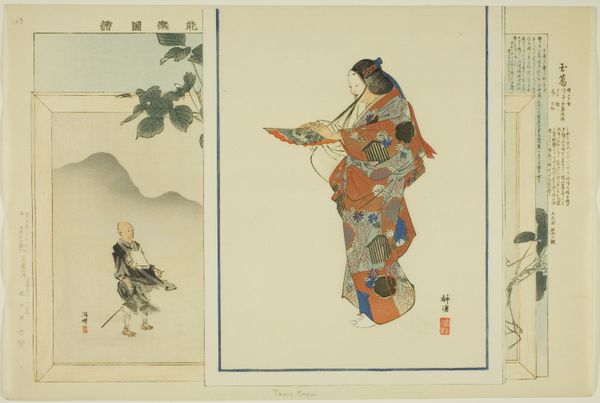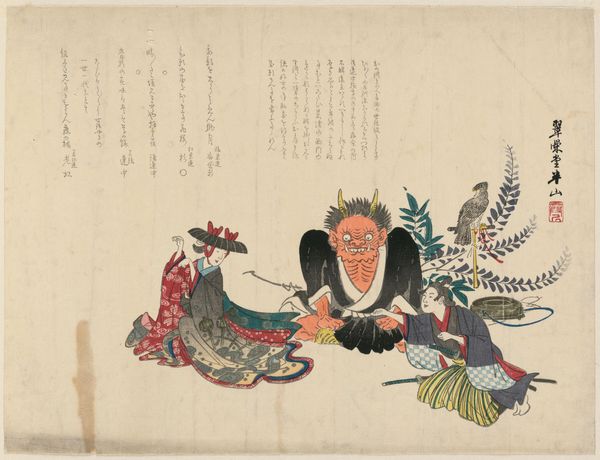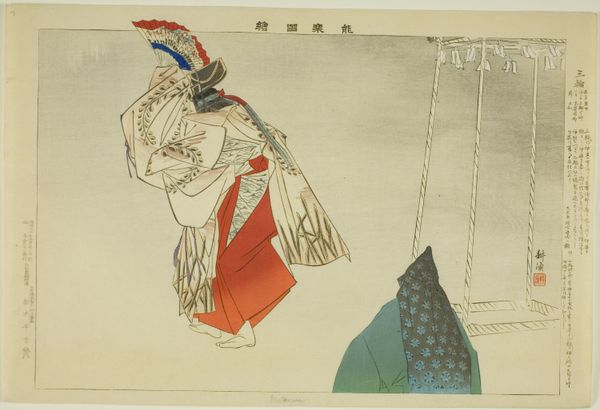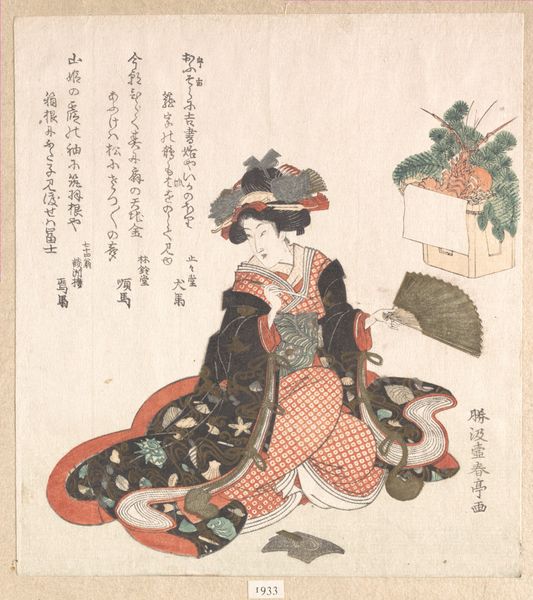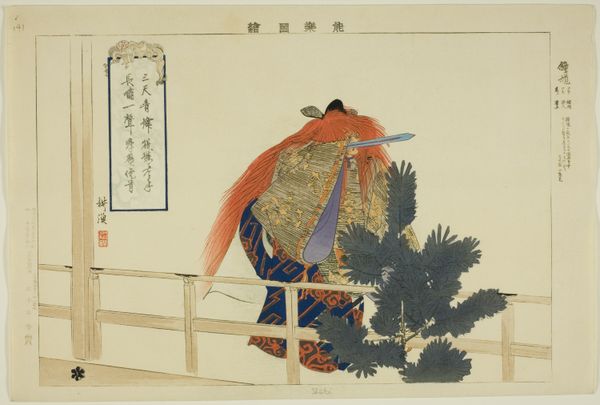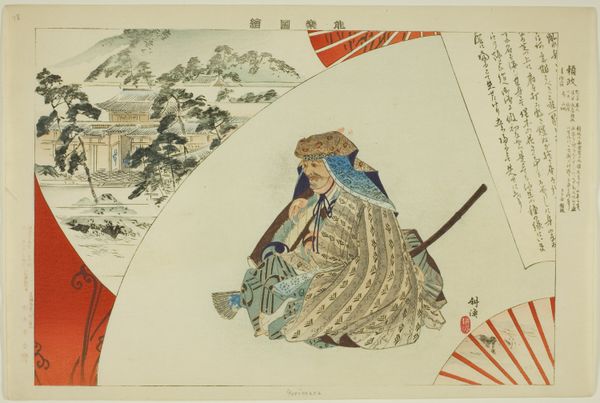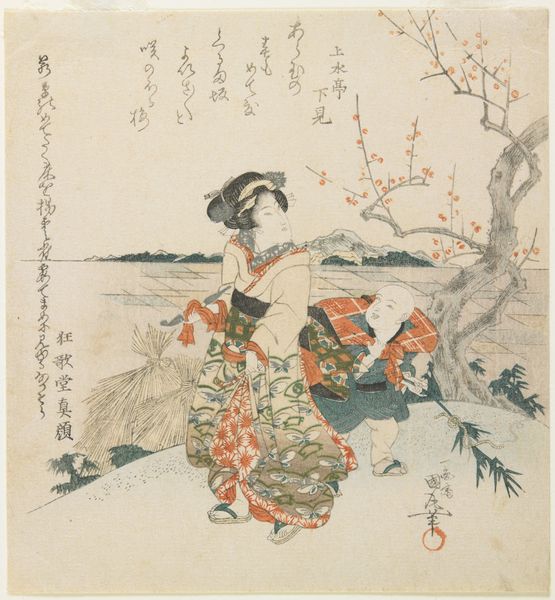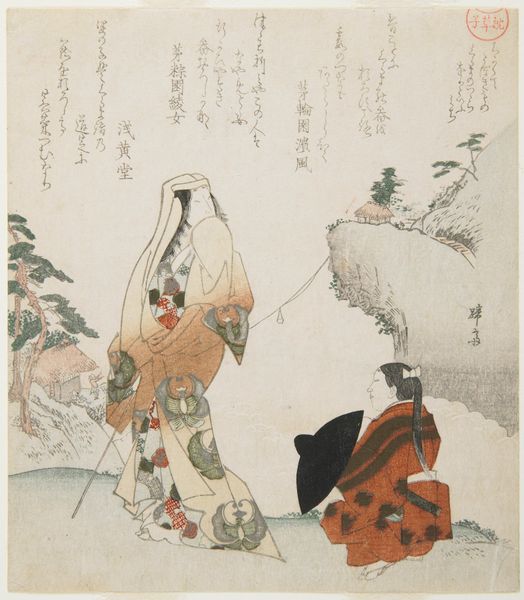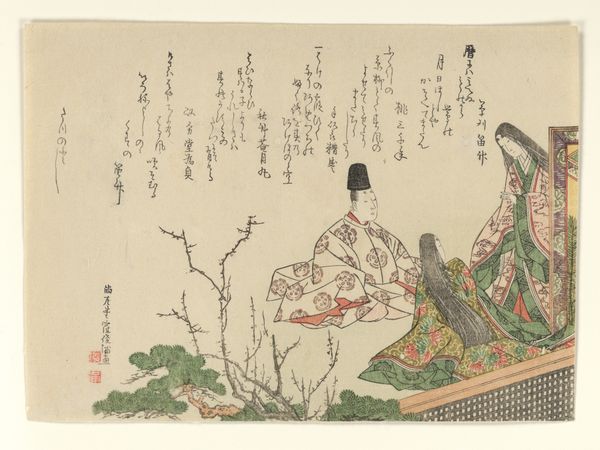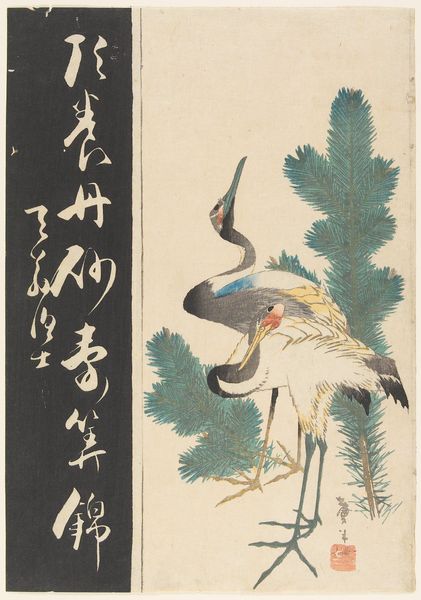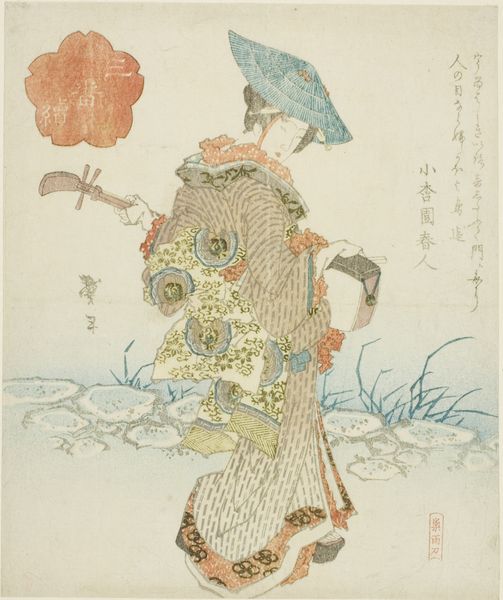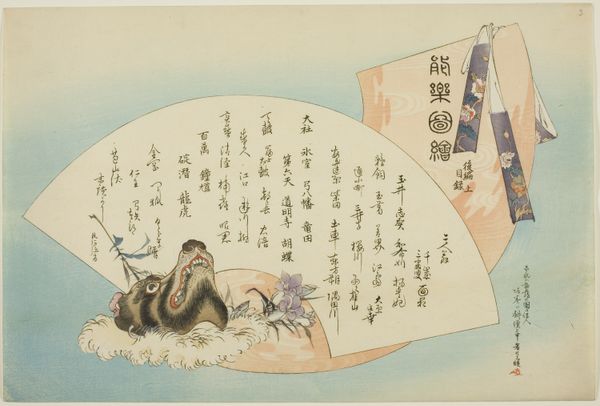
Nishikigi, from the series "Pictures of No Performances (Nogaku Zue)" 1898
0:00
0:00
Dimensions: Approx. 25.2 × 37.4 cm (10 × 14 4/3 in.)
Copyright: Public Domain
Curator: Ah, yes. Let’s discuss Tsukioka Kōgyo’s Nishikigi woodblock print from 1898, part of his “Pictures of No Performances” series. It resides at the Art Institute of Chicago. Editor: The visual contrasts are striking. The composition, dominated by swirling lines in the robes against a subdued, almost ethereal backdrop, creates a sense of otherworldly drama. Curator: Precisely. This print captures a scene from the No play *Nishikigi*, a tale of unrequited love and longing. The ghost of the male character is represented here in a rather flamboyant manner, attempting to win over the woman's affections, who is seated in the swing. Editor: Note the intricate patterns on the garments; look at how the color scheme, from cool blues to warm oranges, emphasizes a visual dialogue—a kind of push-and-pull between the characters' emotional states. Is it perhaps mirroring their unfulfilled connection? Curator: Absolutely. Historically, No theater was heavily supported by the shogunate and later the Meiji aristocracy. This series highlights a crucial moment in the preservation of traditional Japanese arts during rapid modernization. This print exemplifies the revival of interest in classical Japanese narratives and performances. Editor: What I also observe is the economical yet elegant use of lines to define shape and texture. The minimalist background places the visual weight entirely on the figures. The very conscious presentation forces our attention towards a formal study of their costumes, their relationship and their construction. It demands the viewers study relationships in lines, color and spatial relationships. Curator: Indeed, the emphasis on line is paramount. And don't overlook the textual component along the right border— an inscription essential to contextualizing and interpreting the image, offering literary clues to the narrative. The inscription allows those from this cultural to find a deeper meaning in what they already know. It is a type of history that you have to speak. Editor: Kōgyo masterfully balanced modern print techniques with age-old theatrical traditions, really offering us today, over a century later, a fascinating dialogue between image and form. Curator: The artist is highlighting a tradition and giving an opportunity for history to echo into present times, ensuring cultural continuation.
Comments
No comments
Be the first to comment and join the conversation on the ultimate creative platform.
